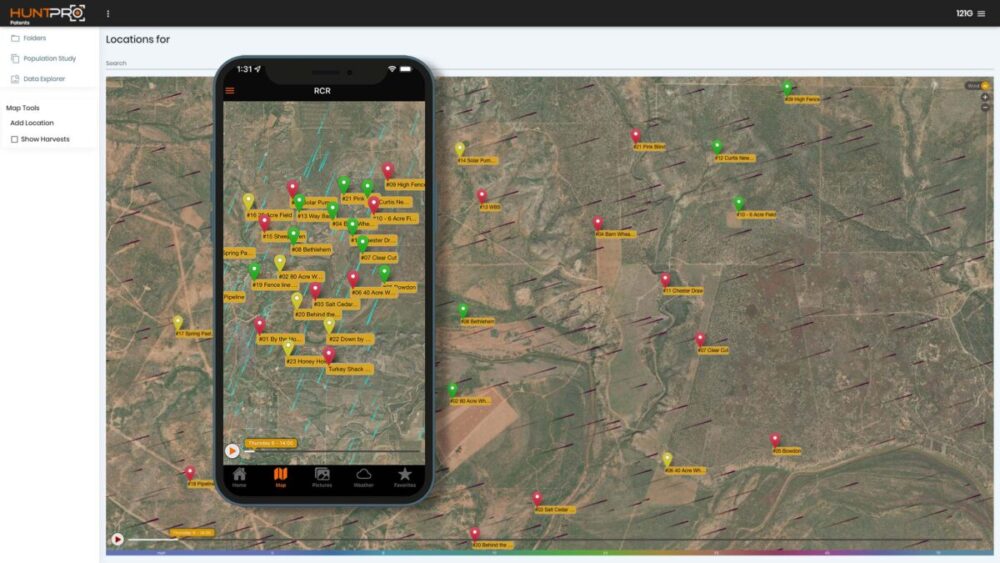
Trail cameras have revolutionized the hunting industry by providing insight into wildlife patterns and behaviors. The ability to unobtrusively monitor animal activity over extended periods has gifted hunters with valuable data, improving their understanding of the game they pursue. Equally important is the technology’s progression that now taps into the field of artificial intelligence to deliver even more refined information. Advancements such as AI heat maps take trail camera intelligence to the next level, allowing for an analysis that could dramatically impact hunting strategies. With AI’s adoption, the hunting community stands on the cusp of a new era where data-driven decisions could define the sport.
Within this context, AI heat maps emerge not simply as another high-tech gadget, but as an instrument poised to reshape hunting tactics. This article investigates how such advanced technology, which operates using trail camera management software with common trail cameras, equips hunters with a dynamic visual representation of animal movement patterns. By considering AI heat maps’ role in informing hunter decision-making, the article argues that these tools are indispensable for developing more effective, adaptable, and successful hunting strategies.
AI Heat Maps

Analyzing the specifics of AI heat maps, it becomes clear that these visual tools are more than just images; they are the result of sophisticated algorithms that scrutinize trail camera footage to decode the location of wildlife. Analyzing patterns of movement, these heat maps distill vast quantities of data to reveal the frequently visited spots in the wilderness – the hot spots – where animals like deer congregate or pass through.
For hunters, the utility of this information is key. It empowers them to make calculated decisions on where to set up their hunting blinds or stands, effectively reducing guesswork and increasing their prospects of a successful hunt. Such heat maps are not just static snapshots; they are dynamic, adaptive charts that can lead to insights into animal behavior, whether that’s to discover a nocturnal pathway used by elusive game or to pinpoint a watering hole bustling with activity at dawn.
Identifying Patterns and Trends
In the pursuit of tracking and understanding wildlife, AI heat maps have emerged as a technological boon for hunters. These maps, derived from trail camera feeds and analyzed over time, make clear the subtleties of animal behavior with clarity that was previously unattainable. They offer a window into the routines and habits of wildlife, showing not just where animals have been, but when they prefer to visit certain areas. With diligent observation, patterns begin to crystallize, revealing the peaks of activity during particular times of the day or season.
Hunters can harness this data to predict future animal movements, strategically planning their outings around these insights. Such predictive power can be important in choosing the optimal times and locales for hunting expeditions, increasing the likelihood of encountering game.
Adjusting Strategies in Real Time

The integration of AI heat maps into hunting practices has given outdoorsmen an advanced tool for tracking animal movements as they happen. This real-time monitoring greatly alters the approach in the field, as it gives hunters the chance to change their methods on the spot.
Observing through a heat map, live data charts the rise and fall of where animals are active, highlighting productive and sparse areas in terms of wildlife. If the location a hunter has chosen becomes still, they can quickly make educated choices to move to better places, as shown by the heatmap’s colorful representation of wildlife. These real-time changes, facilitated by AI’s analysis of data, can turn a day filled with idle time into an active pursuit, improving the chances of a successful wildlife encounter.
Enhancing Hunting Efficiency
The application of AI heat maps refines the hunting process, providing a vital edge for enthusiasts looking to enhance their hunting efficiency. By utilizing these data-rich maps, hunters can direct their focus to areas of intense wildlife traffic, ensuring that their time in the field is not wasted in low-activity regions. This precision targeting not only saves time but also reduces the ecological impact by minimizing unnecessary disturbance in the habitat.
By predetermining hotspot zones using AI, hunters are equipped to position themselves strategically. What’s more, the ability to concentrate on zones with higher animal activity has a ripple effect—it refines the hunters’ skills, deepens their understanding of animal behavior, and ultimately enriches the overall hunting experience as time invested yields greater returns in the form of wildlife observation and harvest opportunities.
Utilizing AI Technology for Success

The digital revolution has brought a plethora of tools and advancements to various disciplines, including hunting, where AI technology now plays a key role. As hunters blend traditional skills with modern tech, AI heat maps from trail cameras stand out by providing a fresh perspective on wildlife activity.
These maps are a distillation of complex data, offering a lucid picture of where and when game is likely to appear. This intel equips hunters with a tactical advantage—enabling them to focus their efforts more intelligently and react to animal patterns with informed precision. This synergy of nature and technology not only boosts a hunter’s success rate by revealing the hottest zones for activity but also fosters a deeper connection with the environment, ensuring a respectful and sustainable approach to the sport.
In conclusion, the article has highlighted the impact AI heat maps from trail cameras have on hunting practices. These advanced tools aid hunters in pinpointing wildlife hotspots, understanding behavioral patterns, and making informed decisions on the fly. As shown, diligent use of AI heat maps can lead to more efficient and successful hunting trips. By focusing on areas with proven activity, hunters save time and reduce ecological footprint. What’s more, real-time data enables quick strategic shifts, enhancing the likelihood of a favorable hunt.








